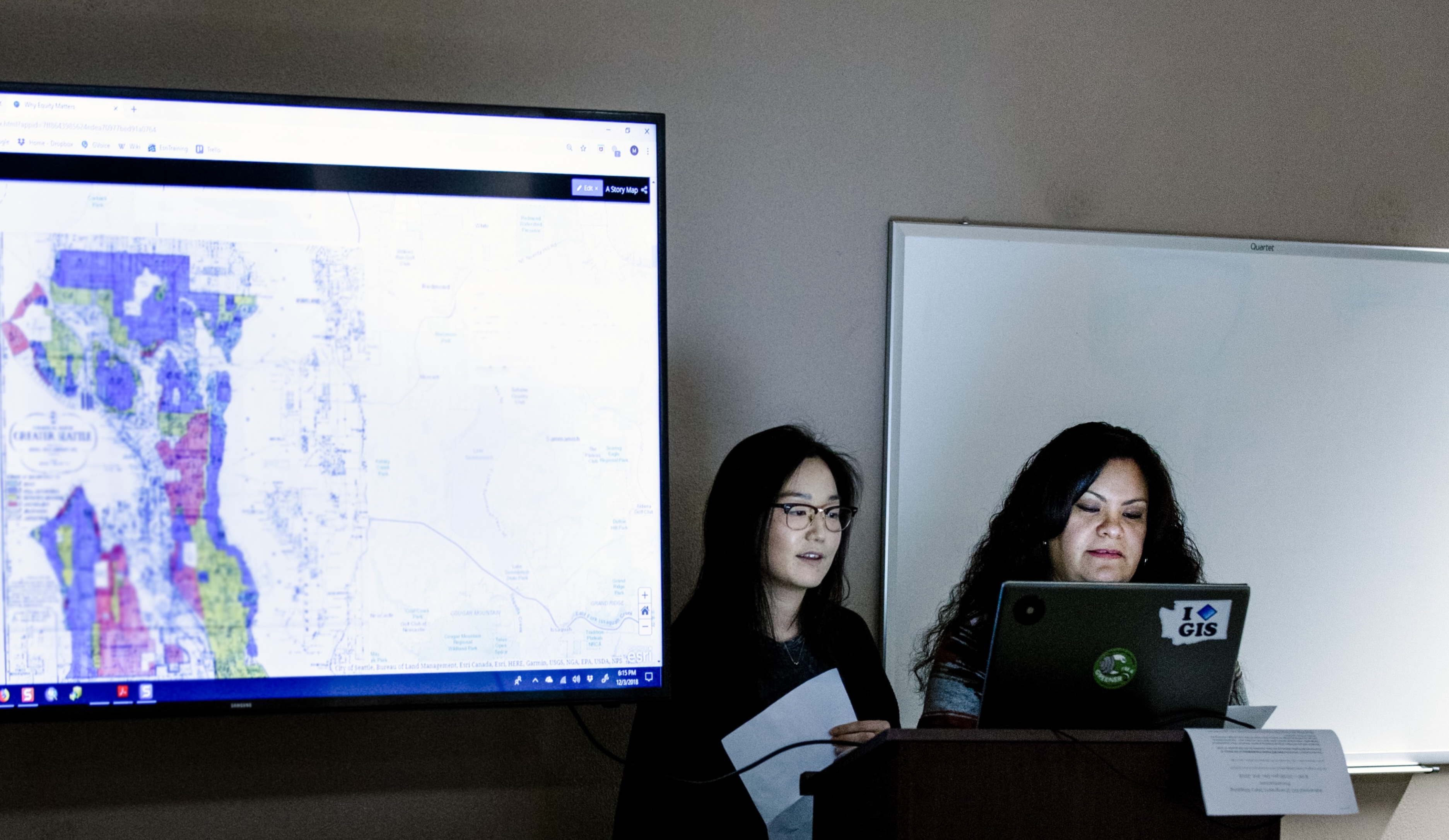What You'll Learn
This certificate introduces you to the exciting and expanding world of geographic information systems (GIS).
GIS is a rapidly-growing field with wide applicability around the world. Government agencies and companies use GIS to manage large spatial databases, generate maps and apps, conduct spatial analysis and support decisions. In business, science, and policy, GIS informs the allocation of assets, trade-offs between alternatives, potential environmental risks and many other issues.
In this certificate program, you’ll learn principles of geography and tools of spatial analysis to understand the connections between physical, cultural, historical and other properties of the environment. You will also learn to create maps and interactive apps including interactive map viewers, 3D scenes, story maps and dashboards. A comprehensive GIS portfolio will be developed through the certificate courses, culminating in a student-designed research project that fuses remote sensing analysis, field data collection with student-developed mobile apps and a story map website to communicate your research.
In order to complete this certificate in one year, students must begin in the fall quarter and take two courses each quarter. Students seeking the certificate over two years have more flexibility and can benefit by prioritizing the first three courses in the sequence during the first year.
Certificate Coursework
The spring Field Data Collection and summer Research Project courses will require fieldwork to conduct investigations and collect data. Students should be prepared to employ these skills before enrolling in either course.
Certificate Coursework
This certificate consists of 28 undergraduate credits. The following core courses must be taken in sequence:
GIS: Introduction and Principles - Fall Quarter, 4 credits
GIS: Analysis with ArcGIS Pro - Winter Quarter, 4 credits
GIS: Remote Sensing Imagery - Spring Quarter, 4 credits*
The following courses may be taken concurrently, prior to, or after completion of the core courses:
GIS: Mapping in Excel - Fall Quarter, 4 credits
GIS: StoryMaps and Apps - Winter Quarter, 4 credits
GIS: Field Data Collection - Spring Quarter, 4 credits
The following is the final course for the certificate and may be taken when all other courses have been completed:
GIS: Research Project - Summer Quarter, 4 credits*
*Students are required to earn upper division science credits in these courses to earn their certificate. Upper division science credit is considered to be junior-senior college level work. Other colleges/universities often use course numbers 300-499 to signify that a course is upper-division. While you may be eligible to receive upper division credit in GIS: Field Data Collection, it is not required to earn the certificate.
Learn more about courses in the Academic Catalog

